Spatial Computing
-
WWDC24 -
 9:24
9:24
What’s new in USD and MaterialX
Explore updates to Universal Scene Description and MaterialX support on Apple platforms. Discover how these technologies provide a foundation for 3D content creation and delivery, and learn how they can help streamline your workflows for creating great spatial experiences. Learn about USD and...
-
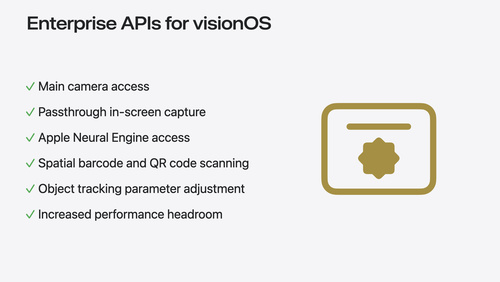 21:18
21:18
Introducing enterprise APIs for visionOS
Find out how you can use new enterprise APIs for visionOS to create spatial experiences that enhance employee and customer productivity on Apple Vision Pro.
-
 23:13
23:13
What’s new in SwiftUI
Learn how you can use SwiftUI to build great apps for any Apple platform. Explore a fresh new look and feel for tabs and documents on iPadOS. Improve your window management with new windowing APIs, and gain more control over immersive spaces and volumes in your visionOS apps. We'll also take you...
-
 15:09
15:09
Create enhanced spatial computing experiences with ARKit
Learn how to create captivating immersive experiences with ARKit's latest features. Explore ways to use room tracking and object tracking to further engage with your surroundings. We'll also share how your app can react to changes in your environment's lighting on this platform. Discover...
-
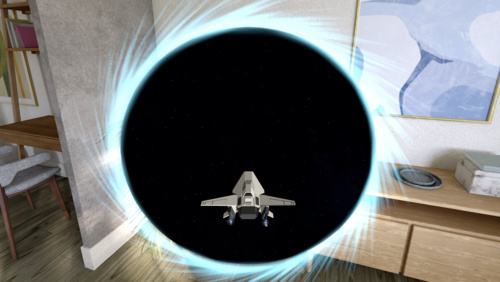 31:31
31:31
Discover RealityKit APIs for iOS, macOS, and visionOS
Learn how new cross-platform APIs in RealityKit can help you build immersive apps for iOS, macOS, and visionOS. Check out the new hover effects, lights and shadows, and portal crossing features, and view them in action through real examples.
-
 17:26
17:26
Enhance the immersion of media viewing in custom environments
Extend your media viewing experience using Reality Composer Pro components like Docking Region, Reverb, and Virtual Environment Probe. Find out how to further enhance immersion using Reflections, Tint Surroundings Effect, SharePlay, and the Immersive Environment Picker.
-
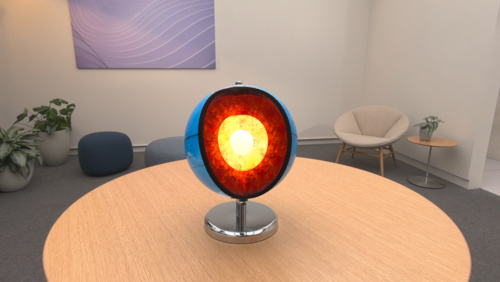 17:01
17:01
Explore object tracking for visionOS
Find out how you can use object tracking to turn real-world objects into virtual anchors in your visionOS app. Learn how you can build spatial experiences with object tracking from start to finish. Find out how to create a reference object using machine learning in Create ML and attach content...
-
 20:48
20:48
Design interactive experiences for visionOS
Learn how you can design a compelling interactive narrative experience for Apple Vision Pro from the designers of Encounter Dinosaurs. Discover how these types of experiences differ from existing apps, media, and games, and explore how to design narratives that bring audiences into new worlds...
-
 24:10
24:10
Break into the RealityKit debugger
Meet the RealityKit debugger and discover how this new tool lets you inspect the entity hierarchy of spatial apps, debug rogue transformations, find missing entities, and detect which parts of your code are causing problems for your systems.
-
 18:42
18:42
Bring your iOS or iPadOS game to visionOS
Discover how to transform your iOS or iPadOS game into a uniquely visionOS experience. Increase the immersion (and fun factor!) with a 3D frame or an immersive background. And invite players further into your world by adding depth to the window with stereoscopy or head tracking.
-
 12:29
12:29
Get started with HealthKit in visionOS
Discover how to use HealthKit to create experiences that take full advantage of the spatial canvas. Learn the capabilities of HealthKit on the platform, find out how to bring an existing iPadOS app to visionOS, and explore the special considerations governing HealthKit during a Guest User...
-
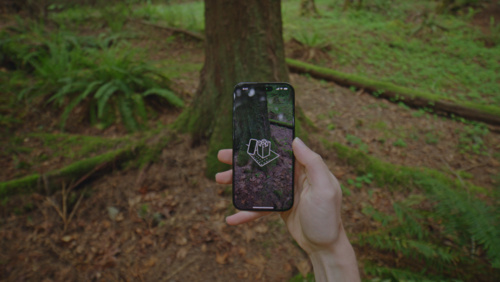 11:31
11:31
Discover area mode for Object Capture
Discover how area mode for Object Capture enables new 3D capture possibilities on iOS by extending the functionality of Object Capture to support capture and reconstruction of an area. Learn how to optimize the quality of iOS captures using the new macOS sample app for reconstruction, and find...
-
 16:40
16:40
Create custom hover effects in visionOS
Learn how to develop custom hover effects that update views when people look at them. Find out how to build an expanding button effect that combines opacity, scale, and clip effects. Discover best practices for creating effects that are comfortable and respect people's accessibility needs.
-
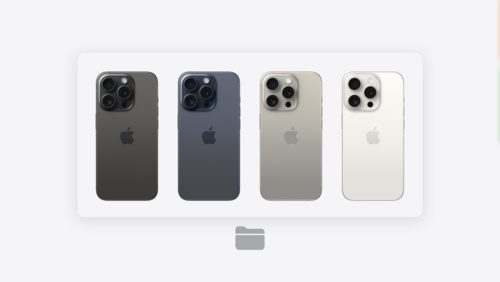 14:24
14:24
What’s new in Quick Look for visionOS
Explore how Quick Look in visionOS can elevate file preview and editing experiences in your app. We'll cover the integration of in-app and windowed Quick Look, as well as a brand-new API that customizes the windowed Quick Look experience in your app. We'll also share the latest enhancements to...
-
 12:55
12:55
Work with windows in SwiftUI
Learn how to create great single and multi-window apps in visionOS, macOS, and iPadOS. Discover tools that let you programmatically open and close windows, adjust position and size, and even replace one window with another. We'll also explore design principles for windows that help people use...
-
 22:13
22:13
Optimize your 3D assets for spatial computing
Dive into an end-to-end workflow for optimized 3D asset creation. Discover best practices for optimizing meshes, materials, and textures in your digital content creation tool. Learn how to harness shader graph, baking, and material instances to enhance your 3D scene while optimizing performance...
-
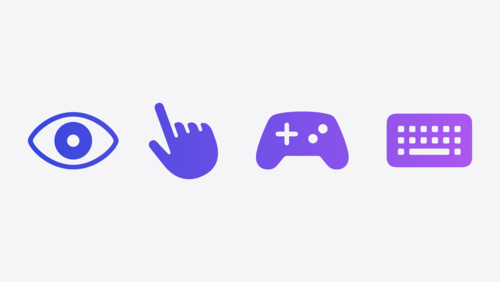 16:22
16:22
Explore game input in visionOS
Discover how to design and implement great input for your game in visionOS. Learn how system gestures let you provide frictionless ways for players to interact with your games. And explore best practices for supporting custom gestures and game controllers.
-
 26:16
26:16
Build immersive web experiences with WebXR
Discover how WebXR empowers you to add fully immersive experiences to your website in visionOS. Find out how to build WebXR experiences that take full advantage of the input capabilities of visionOS, and learn how you can use Simulator to test WebXR experiences on macOS.
-
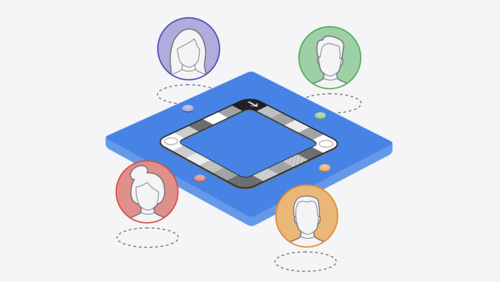 16:39
16:39
Meet TabletopKit for visionOS
Build a board game for visionOS from scratch using TabletopKit. We'll show you how to set up your game, add powerful rendering using RealityKit, and enable multiplayer using spatial Personas in FaceTime with only a few extra lines of code.
-
 9:27
9:27
Create custom environments for your immersive apps in visionOS
Discover how to create visually rich and performant customized app environments for Apple Vision Pro. Learn design guidelines, get expert recommendations, and explore techniques you can use in any digital content creation tool to begin building your immersive environment.
-
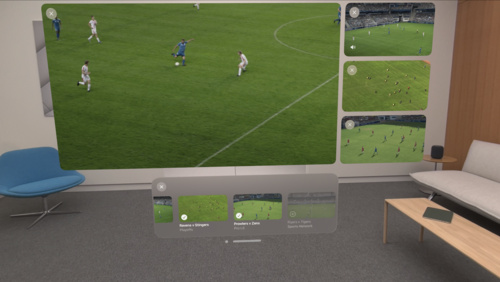 14:02
14:02
Explore multiview video playback in visionOS
Learn how AVExperienceController can enable playback of multiple videos on Apple Vision Pro. Review best practices for adoption and explore great use cases, like viewing a sports broadcast from different angles or watching multiple games simultaneously. And discover how to design a compelling and...
-
 32:17
32:17
Dive deep into volumes and immersive spaces
Discover powerful new ways to customize volumes and immersive spaces in visionOS. Learn to fine-tune how volumes resize and respond to people moving around them. Make volumes and immersive spaces interact through the power of coordinate conversions. Find out how to make your app react when people...
-
 19:03
19:03
Design great visionOS apps
Find out how to create compelling spatial computing apps by embracing immersion, designing for eyes and hands, and taking advantage of depth, scale, and space. We'll share several examples of great visionOS apps and explore how their designers approached creating new experiences for the platform.
-
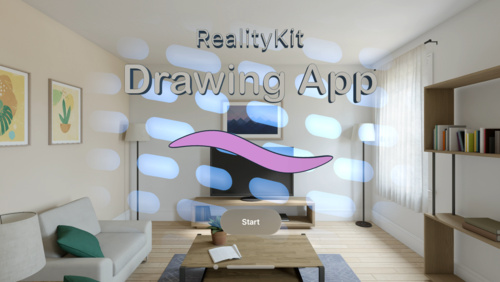 32:25
32:25
Build a spatial drawing app with RealityKit
Harness the power of RealityKit through the process of building a spatial drawing app. As you create an eye-catching spatial experience that integrates RealityKit with ARKit and SwiftUI, you'll explore how resources work in RealityKit and how to use features like low-level mesh and texture APIs...
-
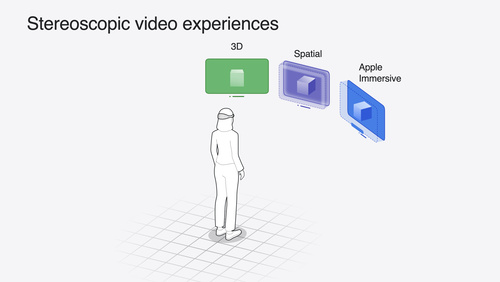 21:52
21:52
Build compelling spatial photo and video experiences
Learn how to adopt spatial photos and videos in your apps. Explore the different types of stereoscopic media and find out how to capture spatial videos in your iOS app on iPhone 15 Pro. Discover the various ways to detect and present spatial media, including the new QuickLook Preview Application...
-
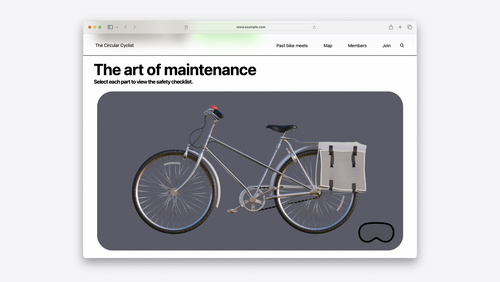 20:09
20:09
Optimize for the spatial web
Discover how to make the most of visionOS capabilities on the web. Explore recent updates like improvements to selection highlighting, and the ability to present spatial photos and panorama images in fullscreen. Learn to take advantage of existing web standards for dictation and text-to-speech...
-
 23:20
23:20
Enhance your spatial computing app with RealityKit audio
Elevate your spatial computing experience using RealityKit audio. Discover how spatial audio can make your 3D immersive experiences come to life. From ambient audio, reverb, to real-time procedural audio that can add character to your 3D content, learn how RealityKit audio APIs can help make your...
-
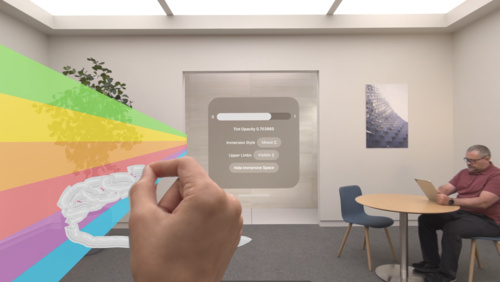 19:54
19:54
Render Metal with passthrough in visionOS
Get ready to extend your Metal experiences for visionOS. Learn best practices for integrating your rendered content with people's physical environments with passthrough. Find out how to position rendered content to match the physical world, reduce latency with trackable anchor prediction, and more.
-
 34:36
34:36
Compose interactive 3D content in Reality Composer Pro
Discover how the Timeline view in Reality Composer Pro can bring your 3D content to life. Learn how to create an animated story in which characters and objects interact with each other and the world around them using inverse kinematics, blend shapes, and skeletal poses. We'll also show you how to...
-
 36:26
36:26
Customize spatial Persona templates in SharePlay
Learn how to use custom spatial Persona templates in your visionOS SharePlay experience to fine-tune the placement of Personas relative to your app. We'll show you how to adopt custom spatial Persona templates in a sample app with SharePlay, move participants between seats, and test your changes...
-
-
WWDC23 -
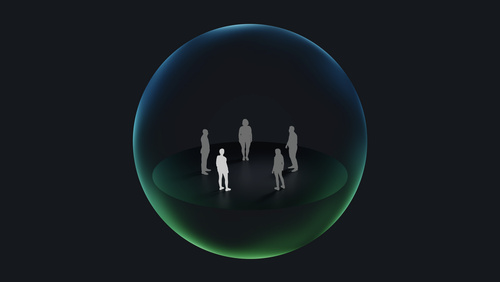 16:26
16:26
Design spatial SharePlay experiences
Explore the types of shared activities you can create in your visionOS apps and find out how your apps can use Spatial Persona templates to support meaningful interactions between people. Discover how to design your UI around a shared context, handle immersive content in a shared activity, and more.
-
 12:03
12:03
Enhance your iPad and iPhone apps for the Shared Space
Get ready to enhance your iPad and iPhone apps for the Shared Space! We'll show you how to optimize your experience to make it feel great on visionOS and explore Designed for iPad app interaction, visual treatments, and media.
-
 24:11
24:11
Meet ARKit for spatial computing
Discover how you can use ARKit's tracking and scene understanding features to develop a whole new universe of immersive apps and games. Learn how visionOS and ARKit work together to help you create apps that understand a person's surroundings — all while preserving privacy. Explore the latest...
-
 15:10
15:10
Bring your Unity VR app to a fully immersive space
Discover how you can bring your existing Unity VR apps and games to visionOS. We'll explore workflows that can help you get started and show you how to build for eyes and hands in your apps and games with the Unity Input System. Learn about Unity's XR Interaction Toolkit, tips for foveated...
-
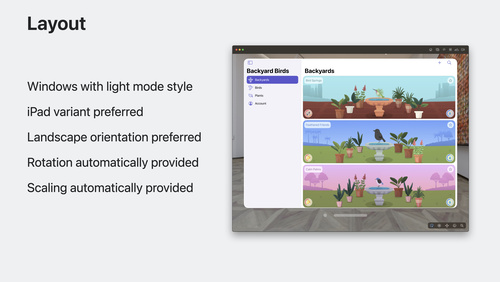 14:17
14:17
Run your iPad and iPhone apps in the Shared Space
Discover how you can run your existing iPad and iPhone apps on Vision Pro. Learn how iPadOS and iOS apps operate on this platform, find out about the Designed for iPad experience, and explore the paths available for enhancing your app experience on visionOS.
-
 25:51
25:51
Create accessible spatial experiences
Learn how you can make spatial computing apps that work well for everyone. Like all Apple platforms, visionOS is designed for accessibility: We'll share how we've reimagined assistive technologies like VoiceOver and Pointer Control and designed features like Dwell Control to help people interact...
-
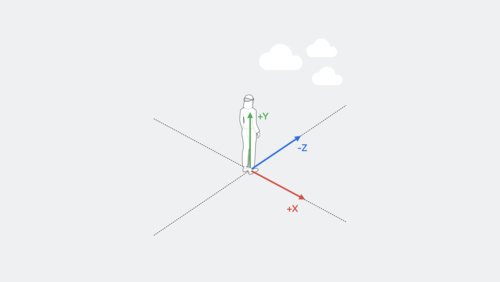 31:08
31:08
Develop your first immersive app
Find out how you can build immersive apps for visionOS using Xcode and Reality Composer Pro. We'll show you how to get started with a new visionOS project, use Xcode Previews for your SwiftUI development, and take advantage of RealityKit and RealityView to render 3D content.
-
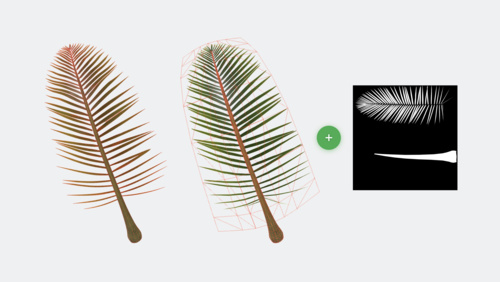 16:59
16:59
Explore rendering for spatial computing
Find out how you can take control of RealityKit rendering to improve the look and feel of your apps and games on visionOS. Discover how you can customize lighting, add grounding shadows, and control tone mapping for your content. We'll also go over best practices for two key treatments on the...
-
 23:53
23:53
Go beyond the window with SwiftUI
Get ready to launch into space — a new SwiftUI scene type that can help you make great immersive experiences for visionOS. We'll show you how to create a new scene with ImmersiveSpace, place 3D content, and integrate RealityView. Explore how you can use the immersionStyle scene modifier to...
-
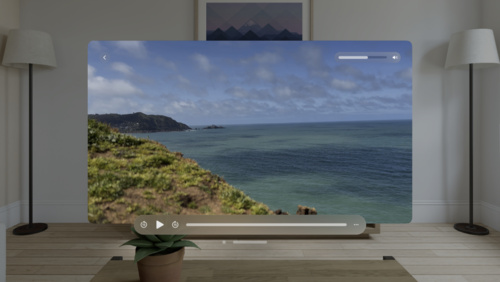 13:57
13:57
Create a great spatial playback experience
Get ready to support video in your visionOS app! Take a tour of the frameworks and APIs that power video playback and learn how you can update your app to play 3D content. We'll also share tips for customizing playback to create a more immersive watching experience.
-
 11:24
11:24
Discover Quick Look for spatial computing
Learn how to use Quick Look on visionOS to add powerful previews for 3D content, spatial images and videos, and much more. We'll show you the different ways that the system presents these experiences, demonstrate how someone can drag and drop Quick Look content from an app or website to create a...
-
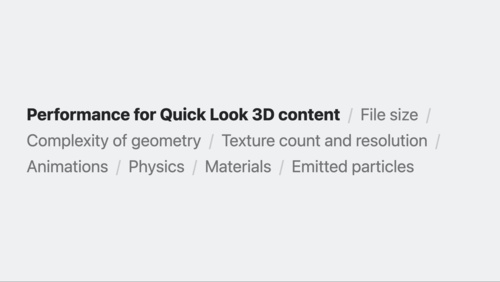 22:05
22:05
Create 3D models for Quick Look spatial experiences
Discover best practices when creating 3D content for Quick Look on visionOS. We'll explore a few different ways to prepare your models for Quick Look, cover important considerations for 3D quality and performance, and show you how to use Reality Composer Pro and Reality Trace to inspect and...
-
 15:56
15:56
Elevate your windowed app for spatial computing
Discover how you can bring your multiplatform SwiftUI app to visionOS and the Shared Space. We'll show you how to add the visionOS destination to an existing app and view your app in the Simulator. Explore how your SwiftUI code automatically adapts to support the unique context and presentation...
-
 14:26
14:26
Explore the USD ecosystem
Discover the latest updates to Universal Scene Description (USD) on Apple platforms and learn how you can deliver great 3D content for your apps, games, and websites. Get to know USD for visionOS, explore MaterialX shaders and color management, and find out about some of the other improvements to...
-
 20:04
20:04
Design for spatial input
Learn how to design great interactions for eyes and hands. We'll share the design principles for spatial input, explore best practices around input methods, and help you create spatial experiences that are comfortable, intuitive, and satisfying.
-
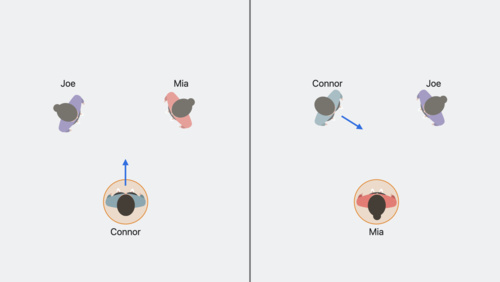 24:31
24:31
Build spatial SharePlay experiences
Discover how you can use the GroupActivities framework to build unique sharing and collaboration experiences for visionOS. We'll introduce you to SharePlay on this platform, learn how to create experiences that make people feel present as if they were in the same space, and explore how immersive...
-
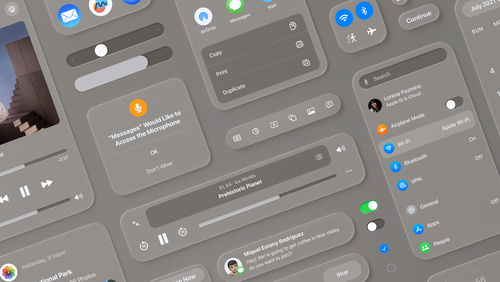 22:41
22:41
Design for spatial user interfaces
Learn how to design great interfaces for spatial computing apps. We'll share how your existing screen-based knowledge easily translates into creating great experiences for visionOS. Explore guidelines for UI components, materials, and typography and find out how you can design experiences that...
-
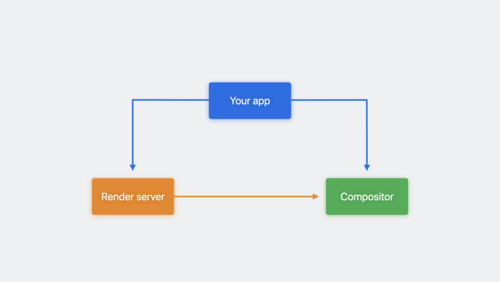 20:57
20:57
Meet RealityKit Trace
Discover how you can use RealityKit Trace to improve the performance of your spatial computing apps. Explore performance profiling guidelines for this platform and learn how the RealityKit Trace template can help you optimize rendering for your apps. We'll also provide guidance on profiling...
-
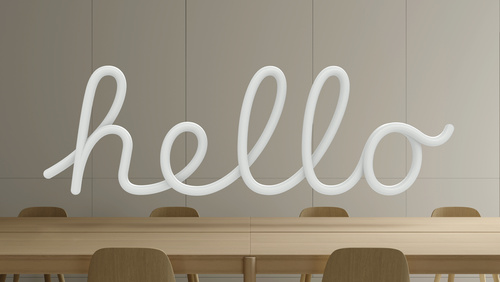 21:35
21:35
Principles of spatial design
Discover the fundamentals of spatial design. Learn how to design with depth, scale, windows, and immersion, and apply best practices for creating comfortable, human-centered experiences that transform reality. Find out how you can use these spatial design principles to extend your existing app or...
-
 16:30
16:30
Deliver video content for spatial experiences
Learn how to prepare and deliver video content for visionOS using HTTP Live Streaming (HLS). Discover the current HLS delivery process for media and explore how you can expand your delivery pipeline to support 3D content. Get up to speed with tips and techniques for spatial media streaming and...
-
 20:51
20:51
Discover Metal for immersive apps
Find out how you can use Metal to render fully immersive experiences for visionOS. We'll show you how to set up a rendering session on the platform and create a basic render loop, and share how you can make your experience interactive by incorporating spatial input.
-
 20:41
20:41
Enhance your spatial computing app with RealityKit
Go beyond the window and learn how you can bring engaging and immersive 3D content to your apps with RealityKit. Discover how SwiftUI scenes work in tandem with RealityView and how you can embed your content into an entity hierarchy. We'll also explore how you can blend virtual content and the...
-
 15:46
15:46
Create immersive Unity apps
Explore how you can use Unity to create engaging and immersive experiences for visionOS. We'll share how Unity integrates seamlessly with Apple frameworks, take you through the tools you can use to build natively for the platform, and show you how volume cameras can bring your existing scenes...
-
 19:30
19:30
Take SwiftUI to the next dimension
Get ready to add depth and dimension to your visionOS apps. Find out how to bring three-dimensional objects to your app using volumes, get to know the Model 3D API, and learn how to position and animate content. We'll also show you how to use UI attachments in RealityView and support gestures in...
-
 27:32
27:32
Build spatial experiences with RealityKit
Discover how RealityKit can bring your apps into a new dimension. Get started with RealityKit entities, components, and systems, and learn how you can add 3D models and effects to your app on visionOS. We'll also take you through the RealityView API and demonstrate how to add 3D objects to...
-
 29:16
29:16
Optimize app power and performance for spatial computing
Learn how you can create powerful apps and games for visionOS by optimizing for performance and efficiency. We'll cover the unique power characteristics of the platform, explore building a performance plan, and share some of the tools and strategies to test and optimize your apps.
-
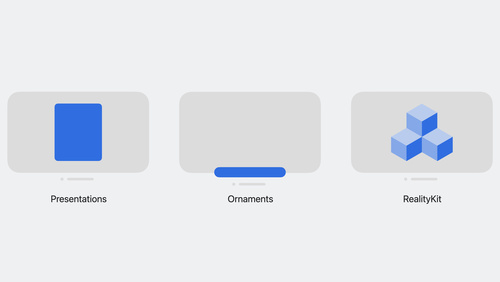 25:39
25:39
Meet UIKit for spatial computing
Learn how to bring your UIKit app to visionOS. We'll show you how to build for a new destination, explore APIs and best practices for spatial computing, and take your content into the third dimension when you use SwiftUI with UIKit in visionOS.
-
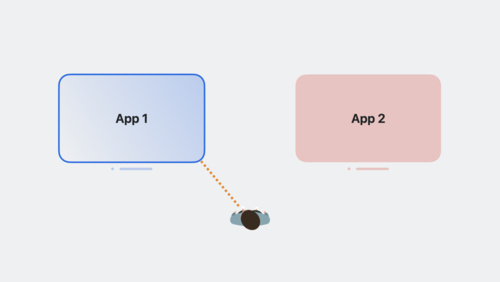 10:41
10:41
Meet Core Location for spatial computing
Discover how Core Location helps your app find its place in the world — literally. We'll share how you can build a spatial computing app that uses a person's location while respecting their privacy. You'll also learn how your app can request location access and how Core Location adapts requests...
-
 22:30
22:30
Explore enhancements to RoomPlan
Join us for an exciting update to RoomPlan as we explore MultiRoom support and enhancements to room representations. Learn how you can scan areas with more detail, capture multiple rooms, and merge individual scans into one larger structure. We'll also share workflows and best practices when...
-
 20:14
20:14
Explore materials in Reality Composer Pro
Learn how Reality Composer Pro can help you alter the appearance of your 3D objects using RealityKit materials. We'll introduce you to MaterialX and physically-based (PBR) shaders, show you how to design dynamic materials using the shader graph editor, and explore adding custom inputs to a...
-
 21:12
21:12
Meet Reality Composer Pro
Discover how to easily compose, edit, and preview 3D content with Reality Composer Pro. Follow along as we explore this developer tool by setting up a new project, composing scenes, adding particle emitters and audio, and even previewing content on device. Once you're familiar with the basics of...
-
 32:49
32:49
What’s new in privacy
At Apple, we believe that privacy is a fundamental human right. Learn about new technologies on Apple platforms that make it easier for you to implement essential privacy patterns that build customer trust in your app. Discover privacy improvements for Apple's platforms, as well as a study of how...
-
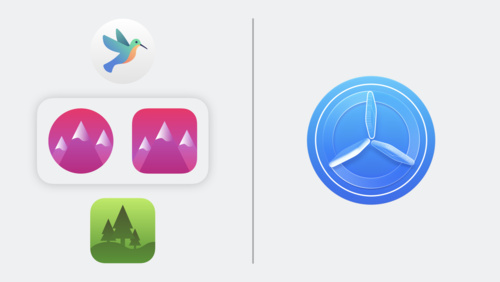 12:22
12:22
Explore App Store Connect for spatial computing
App Store Connect provides the tools you need to test, submit, and manage your visionOS apps on the App Store. Explore basics and best practices for deploying your first spatial computing app, adding support for visionOS to an existing app, and managing compatibility. We'll also show you how...
-
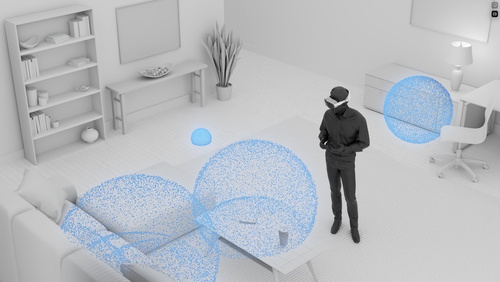 14:33
14:33
Explore immersive sound design
Discover how you can use sound to enhance the experience of your visionOS apps and games. Learn how Apple designers select sounds and build soundscapes to create textural, immersive experiences. We'll share how you can enrich basic interactions in your app with sound when you place audio cues...
-
 14:59
14:59
Enhance your app’s audio experience with AirPods
Discover how you can create transformative audio experiences in your app using AirPods. Learn how to incorporate AirPods Automatic Switching, use AVAudioApplication to support Mute Control, and take advantage of Spatial Audio to create immersive soundscapes in your app or game.
-
 34:15
34:15
Work with Reality Composer Pro content in Xcode
Learn how to bring content from Reality Composer Pro to life in Xcode. We'll show you how to load 3D scenes into Xcode, integrate your content with your code, and add interactivity to your app. We'll also share best practices and tips for using these tools together in your development workflow...
-
 18:26
18:26
Build great games for spatial computing
Find out how you can develop great gaming experiences for visionOS. We'll share some of the key building blocks that help you create games for this platform, explore how your experiences can fluidly move between levels of immersion, and provide a roadmap for exploring ARKit, RealityKit, Reality...
-
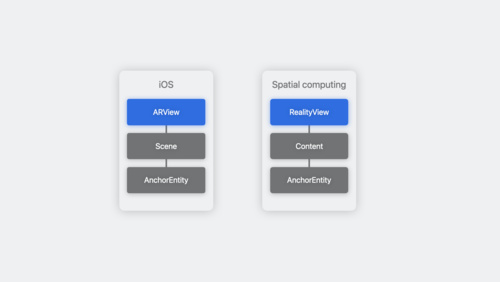 27:41
27:41
Evolve your ARKit app for spatial experiences
Discover how you can bring your app's AR experience to visionOS. Learn how ARKit and RealityKit have evolved for spatial computing: We'll highlight conceptual and API changes for those coming from iPadOS and iOS and guide you to sessions with more details to help you bring your AR experience to...
-
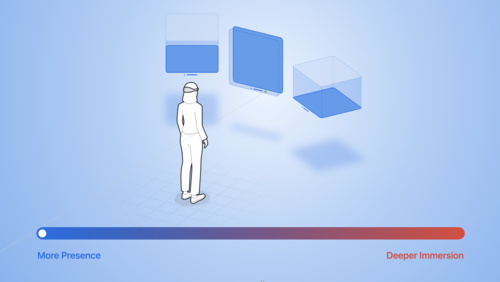 31:55
31:55
Get started with building apps for spatial computing
Get ready to develop apps and games for visionOS! Discover the fundamental building blocks that make up spatial computing — windows, volumes, and spaces — and find out how you can use these elements to build engaging and immersive experiences.
-
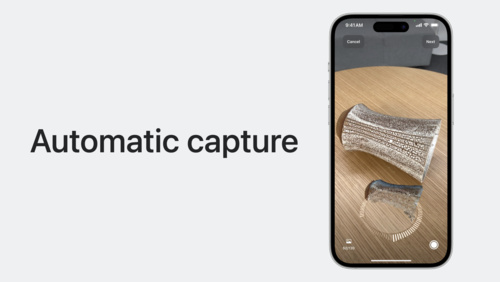 20:05
20:05
Meet Object Capture for iOS
Discover how you can offer an end-to-end Object Capture experience directly in your iOS apps to help people turn their objects into ready-to-use 3D models. Learn how you can create a fully automated Object Capture scan flow with our sample app and how you can assist people in automatically...
-
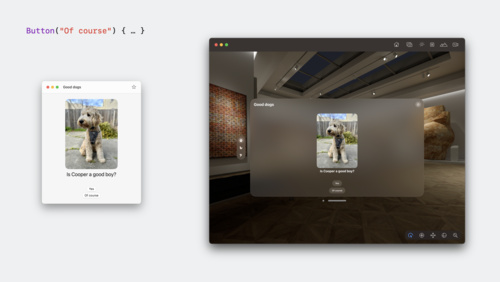 25:59
25:59
Meet SwiftUI for spatial computing
Take a tour of the solar system with us and explore SwiftUI for visionOS! Discover how you can build an entirely new universe of apps with windows, volumes, and spaces. We'll show you how to get started with SwiftUI on this platform as we build an astronomy app, add 3D content, and create a fully...
-
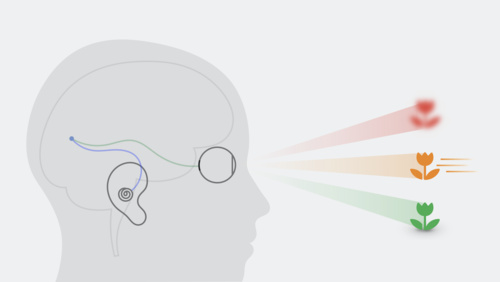 15:10
15:10
Design considerations for vision and motion
Learn how to design engaging immersive experiences for visionOS that respect the limitations of human vision and motion perception. We'll show you how you can use depth cues, contrast, focus, and motion to keep people comfortable as they enjoy your apps and games.
-
-
WWDC22 -
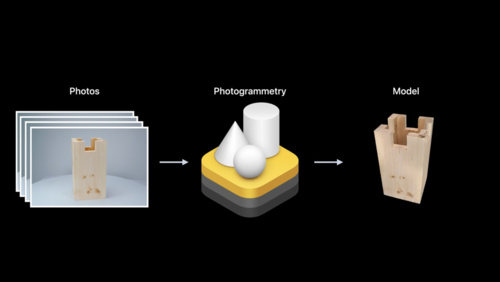 26:00
26:00
Bring your world into augmented reality
Follow along as we demonstrate how you can use Object Capture and RealityKit to bring real-world objects into an augmented reality game. We'll show you how to capture detailed items using the Object Capture framework, add them to a RealityKit project in Xcode, apply stylized shaders and...
-
 16:29
16:29
Create parametric 3D room scans with RoomPlan
RoomPlan can help your app quickly create simplified parametric 3D scans of a room. Learn how you can use this API to easily add a room scanning experience. We'll show you how to adopt this API, explore the 3D parametric output, and share best practices to help your app get great results with...
-
 13:20
13:20
Qualities of great AR experiences
Discover best practices and techniques to help craft magical AR experiences for iPhone and iPad. We'll provide guidance to help you determine if AR is a good fit for your experience, explore examples of great AR apps, and take you through key considerations when designing for augmented reality.
-
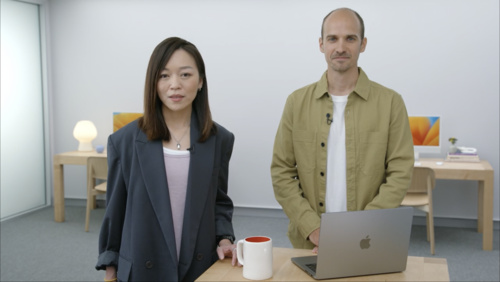 22:21
22:21
Explore USD tools and rendering
Discover the latest advancements in tooling to help you generate, inspect, and convert Universal Scene Description (USD) assets. We'll learn about updates to these tools and help you integrate them into your content creation pipeline. We'll also explore the power of USD Hydra rendering, and show...
-
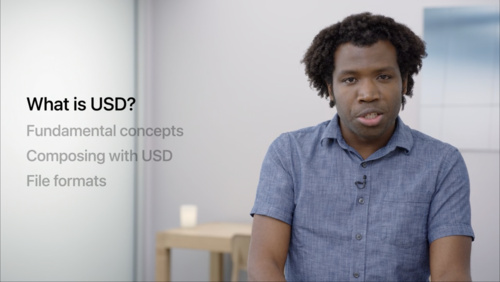 18:15
18:15
Understand USD fundamentals
Discover the fundamentals of Pixar's Universal Scene Description (USD) and learn how it can help you build great 3D assets and workflows. We'll introduce you to the core concepts behind USD and explore how you can integrate the format into your content creation pipeline. We'll also show you how...
-
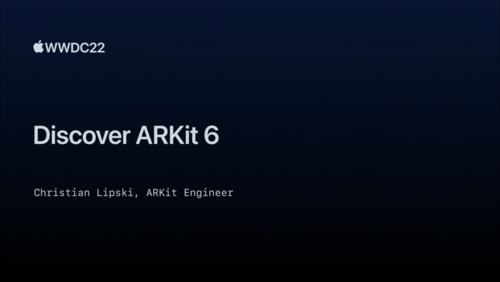 19:27
19:27
Discover ARKit 6
Discover how you can build more refined and powerful augmented reality apps with ARKit 6. We'll explore how you can create AR experiences rendered in 4K HDR and take you through camera settings customizations for your app. We'll also share how you can export high-resolution still images from an...
-
-
WWDC21 -
 15:07
15:07
Explore ShazamKit
Take advantage of Shazam's exact audio matching capabilities within your app when you use ShazamKit. Learn how you can harness the immense Shazam catalog to create all sorts of experiences, including quickly recognizing the exact song playing in the background of a video captured by your app,...
-
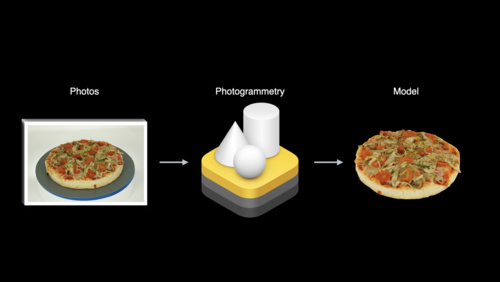 27:56
27:56
Create 3D models with Object Capture
Object Capture provides a quick and easy way to create lifelike 3D models of real-world objects using just a few images. Learn how you can get started and bring your assets to life with Photogrammetry for macOS. And discover best practices with object selection and image capture to help you...
-
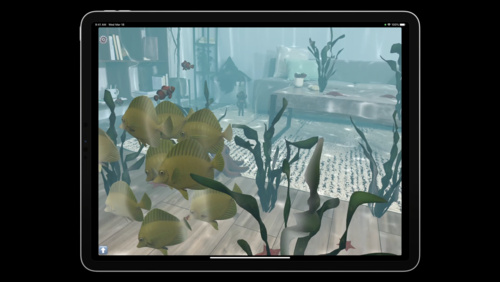 25:07
25:07
Dive into RealityKit 2
Creating engaging AR experiences has never been easier with RealityKit 2. Explore the latest enhancements to the RealityKit framework and take a deep dive into this underwater sample project. We'll take you through the improved Entity Component System, streamlined animation pipeline, and the...
-
 29:53
29:53
Explore advanced rendering with RealityKit 2
Create stunning visuals for your augmented reality experiences with cutting-edge rendering advancements in RealityKit. Learn the art of writing custom shaders, draw real-time dynamic meshes, and explore creative post-processing effects to help you stylize your AR scene.
-
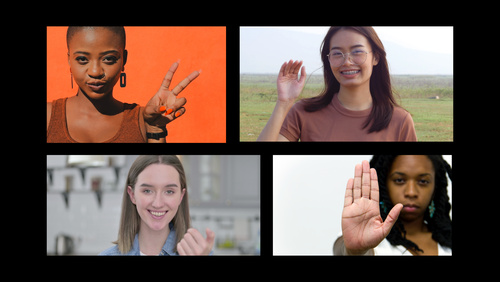 26:49
26:49
Classify hand poses and actions with Create ML
With Create ML, your app's ability to understand the expressiveness of the human hand has never been easier. Discover how you can build off the support for Hand Pose Detection in Vision and train custom Hand Pose and Hand Action classifiers using the Create ML app and framework. Learn how simple...
-
 14:26
14:26
AR Quick Look, meet Object Capture
Discover simple ways to bring your Object Capture assets to AR Quick Look while optimizing for visual quality and file size. Explore ways you can integrate AR Quick Look and Object Capture to help create entirely new experiences. To get the most out of this session, we recommend first watching...
-
 18:25
18:25
Design for spatial interaction
Discover the principles for creating intuitive physical interactions between two or more devices, as demonstrated by Apple designers who worked on features for iPhone, HomePod mini, and AirTag. Explore how you can apply these patterns to your own app when designing features for Apple platforms,...
-
 20:28
20:28
Explore ARKit 5
Build the next generation of augmented reality apps with ARKit 5. Explore how you can use Location Anchors in additional regions and more easily onboard people into your location-based AR experience. Learn more about Face Tracking and Motion Capture. And discover best practices for placing your...
-
 14:51
14:51
Create 3D workflows with USD
Discover the flexibility, versatility and power of Pixar's Universal Scene Description (USD) for your 3D workflows. Learn how you can use the USD file format in your professional workflows for macOS: Scan 3D models of your real-world objects using Object Capture, utilize the potential of...
-
 16:00
16:00
Practice audio haptic design
Discover how you can deliver rich app experiences that include animation, sound, and haptics on iPhone. Learn key concepts for designing multimodal experiences within the Core Haptics framework. We'll take you through our sample HapticRicochet app — where haptic and sound feedback is designed in...
-
-
Tech Talks -
 10:23
10:23
Advanced Scene Understanding in AR
ARKit 3.5 and RealityKit provide new capabilities that take full advantage of the LiDAR Scanner on the new iPad Pro. Check out ARKit 3.5 and learn about Scene Geometry, enhanced raycasting, instantaneous virtual object placement, and more. See how RealityKit takes advantage of these features to...
-
 7:25
7:25
Face Tracking with ARKit
ARKit and iPhone X enable a revolutionary capability for robust face tracking in AR apps. See how your app can detect the position, topology, and expression of the user's face, all with high accuracy and in real time. Learn about applying live selfie effects and see how to use facial expressions...
-
-
WWDC20 -
 27:38
27:38
Explore ARKit 4
ARKit 4 enables you to build the next generation of augmented reality apps to transform how people connect with the world around them. We'll walk you through the latest improvements to Apple's augmented reality platform, including how to use Location Anchors to connect virtual objects with a...
-
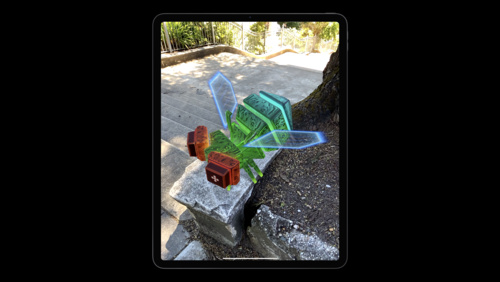 25:15
25:15
What's new in RealityKit
RealityKit is Apple's rendering, animation, physics, and audio engine built from the ground up for augmented reality: It reimagines the traditional 3D renderer to make it easy for developers to prototype and produce high-quality AR experiences. Learn how to effectively implement each of the...
-
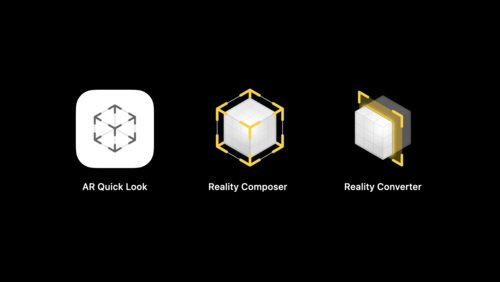 18:38
18:38
Shop online with AR Quick Look
AR Quick Look adds a new dimension to online shopping: We'll show you how to easily showcase your products in augmented reality for a "try before you buy" experience. Discover how to display a product banner in AR Quick Look, integrate Apple Pay, or display custom actions like "add to cart". To...
-
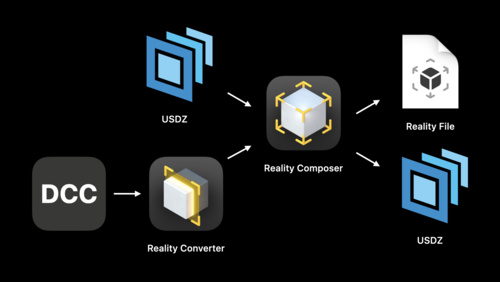 24:41
24:41
What's new in USD
Discover proposed schema and structure updates to the Universal Scene Description (USD) standard. Learn how you can use Reality Composer to build AR content with interactive properties like anchoring, physics, behaviors, 3D text, and spatial audio that exports to USDZ. And, discover streamlined...
-
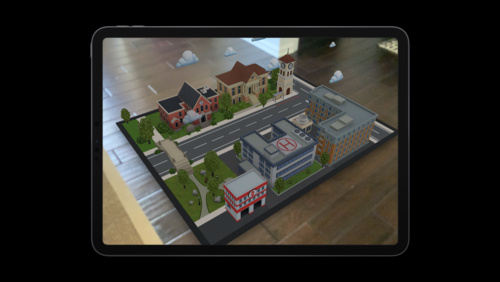 28:18
28:18
The artist’s AR toolkit
Reality Converter and Reality Composer make preparing augmented reality assets for your iOS or iPadOS app easier than ever. Discover how you can convert existing 3D assets into USDZ, bring them into Reality Composer to create AR experiences, and integrate with an existing Xcode project or export...
-
-
WWDC19 -
 51:27
51:27
Introducing ARKit 3
ARKit is the groundbreaking augmented reality (AR) platform for iOS that can transform how people connect with the world around them. Explore the state-of-the-art capabilities of ARKit 3 and discover the innovative foundation it provides for RealityKit. Learn how ARKit makes AR even more...
-
 31:55
31:55
Working with USD
Universal Scene Description (USD) enables the robust description of 3D scenes and empowers engineers and artists to seamlessly collaborate across the creative workflow. Get introduced to the powerful capabilities of USD and explore its incredible scalability. Gain a deeper understanding of how...
-
 39:26
39:26
Bringing People into AR
ARKit 3 enables a revolutionary capability for robust integration of real people into AR scenes. Learn how apps can use live motion capture to animate virtual characters or be applied to 2D and 3D simulation. See how People Occlusion enables even more immersive AR experiences by enabling virtual...
-
 37:13
37:13
Introducing RealityKit and Reality Composer
Architected for AR, RealityKit provides developers access to world-class capabilities for rendering, animation, physics, and spatial audio. See how RealityKit reimagines the traditional 3D engine to make AR development faster and easier for developers than ever before. Understand the building...
-
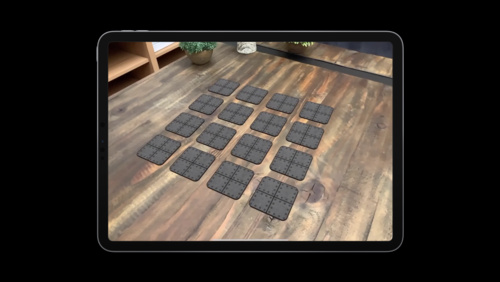 39:47
39:47
Building Apps with RealityKit
Gain a practical understanding of RealityKit capabilities by developing a game using its easy-to-learn API. Learn the recommended approach for loading assets, building a scene, applying animations, and handling game input. See how entities and components express the powerful elements of...
-
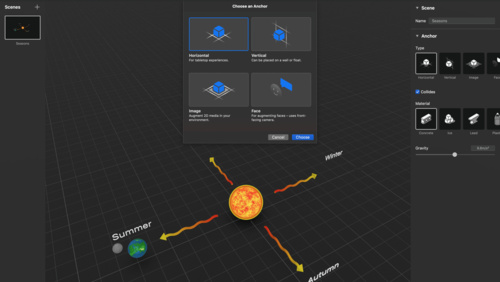 59:05
59:05
Building AR Experiences with Reality Composer
Reality Composer is a tool that lets anyone quickly prototype and build AR scenes ready to integrate into apps or experience with AR Quick Look. Walk through the powerful and intuitive capabilities of Reality Composer and discover hundreds of ready-to-use virtual objects in its built-in AR...
-
 29:43
29:43
Creating Great Apps Using Core ML and ARKit
Take a journey through the creation of an educational game that brings together Core ML, ARKit, and other app frameworks. Discover opportunities for magical interactions in your app through the power of machine learning. Gain a deeper understanding of approaches to solving challenging computer...
-
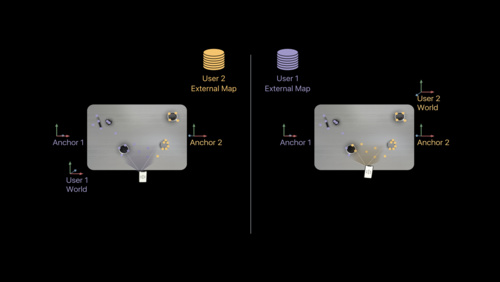 35:17
35:17
Building Collaborative AR Experiences
With iOS 13, ARKit and RealityKit enable apps to establish shared AR experiences faster and easier than ever. Understand how collaborative sessions allow multiple devices to build a combined world map and share AR anchors and updates in real-time. Learn how to incorporate collaborative sessions...
-
 43:57
43:57
Advances in AR Quick Look
AR Quick Look is a built-in viewer for experiencing high-quality content in 3D and AR. See how integration with Reality Composer enables rich, interactive experiences to be displayed and shared more easily than ever before. Explore rendering improvements and multiple object viewing, then dive...
-
-
WWDC17 -
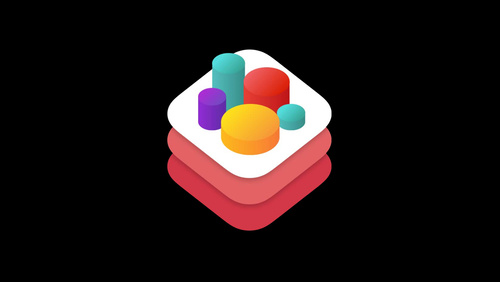 53:52
53:52
SceneKit: What's New
SceneKit is a fast and fully featured high-level 3D graphics framework that enables your apps and games to create immersive scenes and effects. See the latest advances in camera control and effects for simulating real camera optics including bokeh and motion blur. Learn about surface subdivision...
-